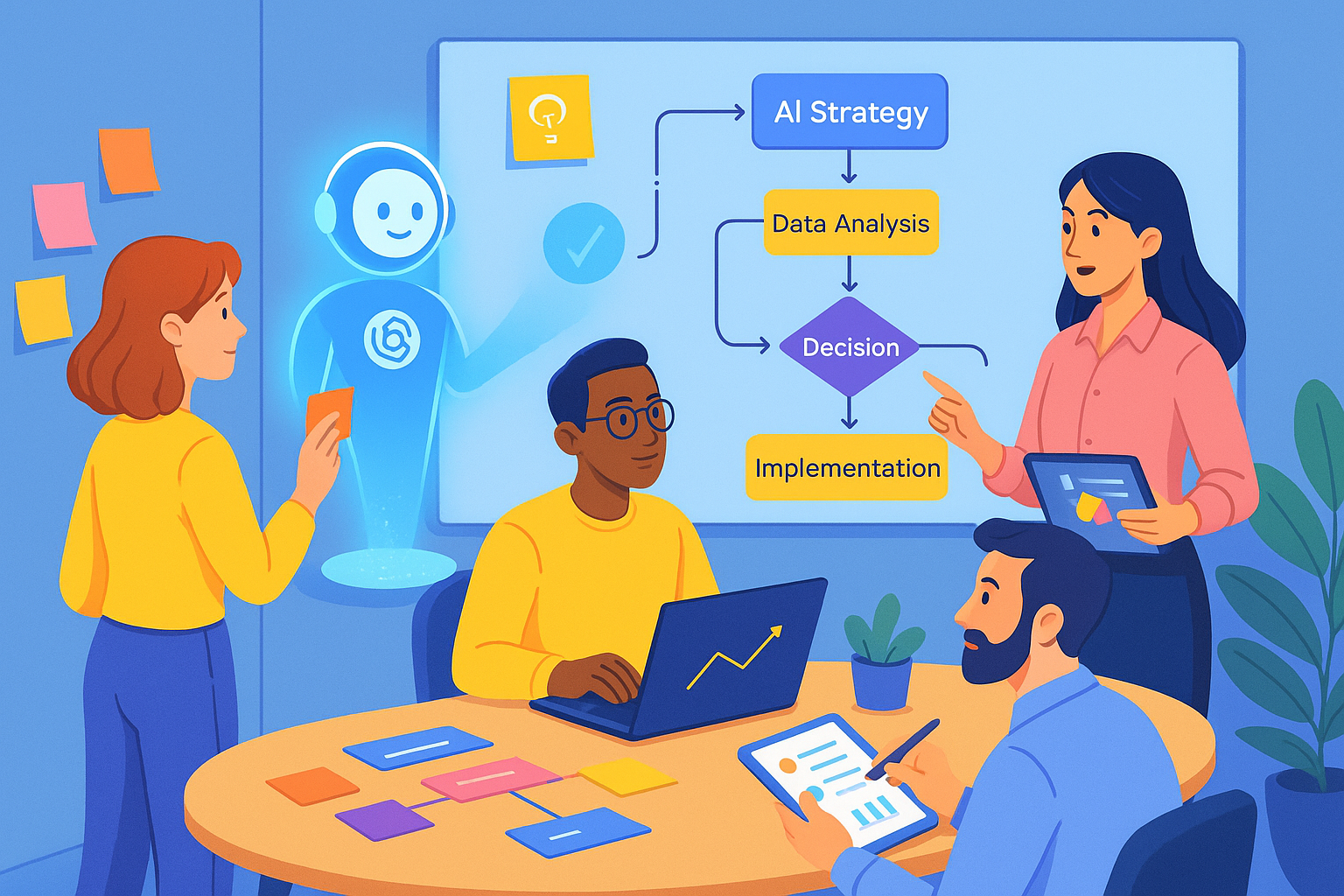Beyond the Hype: Practical Strategies for Implementing AI in Team Workflows
Alright, let’s discuss AI. Not the speculative, science-fiction scenarios, but the practical considerations of integrating it into our everyday work. We’ve all encountered the widespread enthusiasm surrounding AI’s potential to transform workplaces. However, the reality of implementation can often be more complex than anticipated. Therefore, it’s essential to move beyond the hype and explore actionable strategies for effective AI integration, maximizing its benefits while maintaining control and oversight.
Leveraging Prompt Templates for Consistency
Inconsistent interactions with AI tools can lead to variable outputs and inefficiencies. This is where prompt templates become valuable, acting as a standardized communication framework for AI interactions. By employing prompt templates, team members can interact with AI tools in a consistent and effective manner. This approach reduces variability in AI outputs, optimizes time utilization, and ensures results align with team objectives.
For effective implementation, develop reusable templates for common tasks, such as content drafting or data analysis, incorporating clear instructions and contextual information. To further streamline this, platforms like Atlas can facilitate the sharing and management of these prompt templates within teams. This ensures everyone is using the same standardized inputs for AI interactions, promoting consistency and reducing the risk of miscommunication with AI tools.
Defining AI’s Role in Workflow Steps
It’s crucial to acknowledge that AI has limitations and should not be considered a universal solution. The key is to strategically identify tasks where AI excels and those requiring human expertise. Map out your workflows to differentiate between AI-suitable tasks (e.g., automation, data processing) and human-driven tasks (e.g., strategic decision-making, creative oversight).
For example, utilize AI for initial research and data gathering, but retain human review for final editing and quality assurance. Tools like Atlas can be invaluable here, as their workflow visualization capabilities allow teams to clearly define the role of AI within each step of a project. This ensures everyone understands when AI is being used, what its responsibilities are, and where human intervention is necessary.
Standardizing AI Output Formats
Inconsistent output formats from AI-driven tasks can hinder usability and integration. Standardizing these formats enhances efficiency and facilitates seamless integration with existing systems. Define templates for reports, summaries, or data outputs (e.g., JSON, tables) to streamline downstream processes, improve collaboration, and minimize reformatting efforts.
To ensure compatibility and efficient data exchange, consider using a platform like Atlas, which can be configured to enforce standardized output formats for AI-generated content. This ensures that AI outputs are compatible with other tools and systems used by the team.
Additional Strategies for AI Implementation
- Initiating Pilot Programs: Commence AI integration with small, controlled projects to identify potential challenges and refine implementation processes. This gradual approach minimizes disruption and allows for iterative adjustments.
- Providing Team Training and Support: Educate team members on AI tools, prompt engineering techniques, and best practices to foster confidence and competence. Offer ongoing support to address technical issues and optimize utilization.
- Ensuring Data Quality and Compliance: Prioritize the use of clean, structured data inputs to enhance AI accuracy and reliability. Align AI workflows with relevant industry standards (e.g., GDPR, SOC2) to ensure data protection and compliance.
- Monitoring and Optimizing Performance: Implement key performance indicators (KPIs) to track AI’s impact on productivity, accuracy, and return on investment (ROI). Continuously refine prompts and workflows based on feedback and performance metrics to optimize effectiveness.
Atlas’s project management features can be leveraged to track the progress of AI implementation initiatives, monitor key metrics, and gather feedback from team members. This data-driven approach facilitates continuous optimization of AI workflows and ensures they are delivering the desired results.
Addressing Implementation Challenges
It’s important to acknowledge the potential challenges associated with AI implementation:
- Resistance to AI adoption, often stemming from concerns about job displacement or the perceived complexity of the technology.
- The need to carefully balance automation with human oversight to maintain quality and accountability.
- The complexities of managing costs and resource allocation for AI tools and training.
However, these challenges can be effectively addressed through proactive communication, clear guidelines, and a pragmatic approach. Platforms like Atlas facilitate transparent communication and collaboration within teams, which is crucial for addressing concerns and overcoming resistance to AI adoption. Its centralized platform can be used to share information, provide training materials, and gather feedback, fostering a more positive and collaborative environment for AI implementation.
